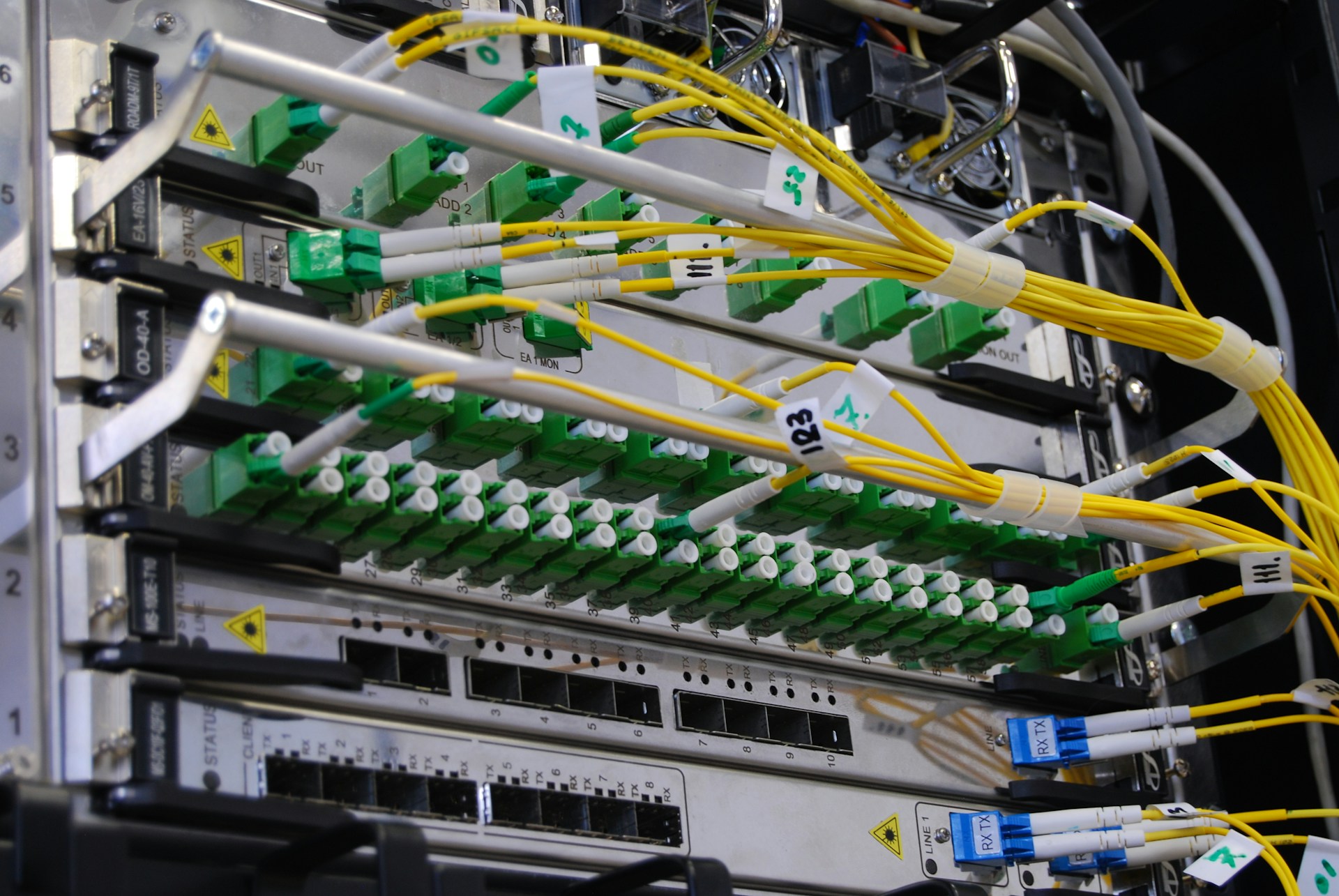Leased Lines vs. Broadband: Comparing Environmental Sustainability
-
April 7, 2025
-
6 min read

As businesses aim to reduce their carbon footprint, it is important to examine the environmental impact of every aspect of operations, including internet connectivity. Leased lines’ environmental impact differs significantly from that of traditional broadband solutions. This article focuses on the sustainability of these two connectivity options, energy efficiency, material usage, and overall eco-friendliness.
Energy Consumption: Fiber Optic’s Efficiency Edge
One of the most significant differences between leased lines and broadband lies in their energy consumption patterns:
- Fiber Optic Leased Lines: Fiber optic cables, the backbone of most leased line services, transmit data using light signals. This method is inherently more energy-efficient than the electrical signals used by copper-based broadband technologies. Fiber optic connections consume less electricity, especially over long distances, contributing to a lower carbon footprint for the internet infrastructure.
- Traditional Broadband: On the other hand, DSL and cable broadband rely on less energy-efficient copper lines. The electricity required to maintain data transmission over copper networks is high. This requirement increases as the distance between the service provider and the end-user grows. This leads to greater overall energy consumption and a more significant environmental impact.
| Energy Efficiency | Fiber Optic Leased Lines | Traditional Broadband |
| Transmission Method | Light Signals | Electrical Signals |
| Energy Usage | Lower | Higher |
| Carbon Footprint | Reduced | Higher |
Material Usage and Durability: Fiber’s Longevity Advantage
The materials used in the construction of leased lines and broadband networks also play a role in their sustainability:
- Fiber Optic Cables: Fiber optic cables are made primarily from silica, an abundant resource. The production process results in lightweight, compact cables that occupy less space than their copper counterparts. While manufacturing fiber optic cables is energy-intensive, their long lifespan and lower energy consumption during operation offset these initial impacts.
- Copper Cables: Traditional broadband networks utilise copper lines, which are more prone to damage and wear over time. This necessitates frequent repairs and replacements, increasing the demand for raw materials. It also contributes to a higher carbon footprint from manufacturing, transportation, and installation. Additionally, the extraction and processing of copper itself can lead to significant environmental degradation.
Maintenance and Resource Optimisation: Fiber’s Reliability Benefit
The durability and reliability of leased lines compared to broadband also influence their environmental sustainability:
- Fiber Optic Networks: Fiber optic cables are less susceptible to issues like corrosion and signal degradation that commonly affect copper-based networks. This robustness results in lower maintenance requirements. It reduces the need for service calls and vehicle emissions from technicians travelling for repairs. The longevity of fiber optic cables also means fewer replacements, minimising waste and the environmental impact of manufacturing and installing new cables.
- Traditional Broadband Infrastructure: Copper-based broadband networks, being more prone to damage and performance issues, require frequent maintenance. This results in increased resource usage, service calls, and vehicle emissions from technicians. The shorter lifespan of copper cables also leads to more waste and a higher environmental impact associated with their disposal and replacement.
E-Waste Reduction and Disposal: Fiber’s Sustainability Advantage
The disposal of old internet infrastructure equipment is another factor in the environmental impact. Here’s how leased lines and traditional broadband compare:
- Fiber Optic Leased Lines: The robust nature of fiber optic cables used in leased lines results in lower maintenance needs and fewer replacements. This decreased need for repairs and upgrades translates to reduced e-waste generation compared to traditional broadband.
- Traditional Broadband: The disposal of old copper cables used in traditional broadband for office can be complex and harmful to the environment if not handled properly. The frequent need for replacements due to damage and wear adds to the e-waste generation and the overall environmental impact.
Supporting Sustainable Practices: Fiber’s Telecommuting Advantage
Beyond their inherent characteristics, leased lines can indirectly contribute to sustainability by enabling eco-friendly business practices. One significant impact is on telecommuting and remote work. The high-speed, reliable connectivity provided by fiber optic leased lines is essential for effective telecommuting and remote work.
By empowering more people to work from home, leased lines can help reduce the number of commuters on the road. This leads to lower carbon emissions from transportation. Moreover, this shift can decrease the demand for large office spaces, further reducing energy consumption and the environmental impact of commercial buildings.
Airtel’s Commitment to Sustainable Connectivity
Airtel has been at the forefront of adopting fiber optic technology for its leased line services. The company’s initiatives align with the environmental benefits of fiber optic connectivity:
- Energy Efficiency and Renewable Energy: Airtel has implemented various energy-saving and emission-reduction strategies across its network infrastructure. This includes the solarisation of network sites, with rooftop solar plants installed at data centres and Main Switching Centers (MSCs). By FY 2022-23, 177 of Airtel’s owned network sites were solarised, with plans to expand this initiative nationwide.
- Green Sites and Hybrid Battery Solutions: Airtel’s ‘Project Green City’ focuses on transforming network sites into eco-friendly ones. As of FY 2023-24, 43% of Airtel’s network sites, including those owned by partners, have been tagged as green sites. They consume less than 100 litres of diesel per quarter. The company has also deployed advanced lithium-ion and VRLA batteries to optimise energy use and reduce reliance on diesel. This results in significant fuel savings and emission reductions.
The Bottom Line: Leased Lines’ Environmental Advantage
When comparing the environmental impact of leased lines and traditional broadband, fiber optic leased lines emerge as the more sustainable choice:
- Energy Efficiency: Fiber optic cables consume less energy, reducing overall power consumption and greenhouse gas emissions.
- Durability and Longevity: The robust nature of fiber optic cables leads to fewer replacements and lower maintenance needs, minimising waste and resource consumption.
- Reduced Physical Footprint: Fiber optic networks require less physical infrastructure, reducing disruption to natural habitats and resource usage.
- Support for Sustainable Practices: Leased lines enable telecommuting and remote work. This contributes to lower carbon emissions from transportation and commercial buildings.
As businesses increasingly prioritise sustainability, choosing a leased line service like Airtel Internet Leased Line can be a step towards reducing your organisation’s environmental footprint. With its focus on energy efficiency, renewable energy, and green network sites, Airtel is committed to providing sustainable connectivity solutions for businesses across India.
Ensure uninterrupted operations with dedicated leased line backed by Airtel’s SLA commitments.
 Share
Share









